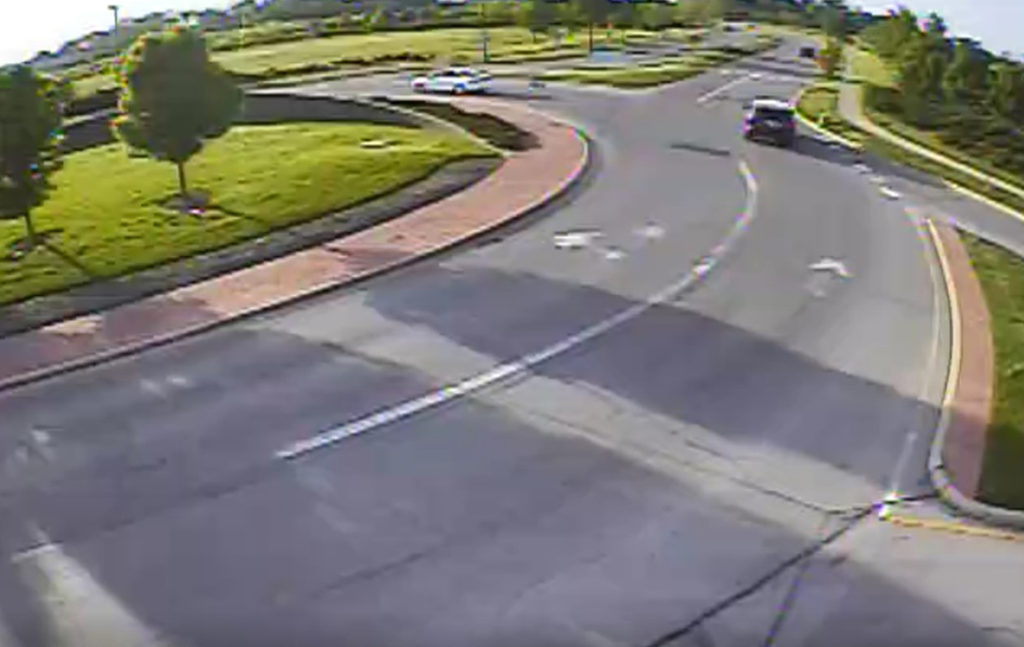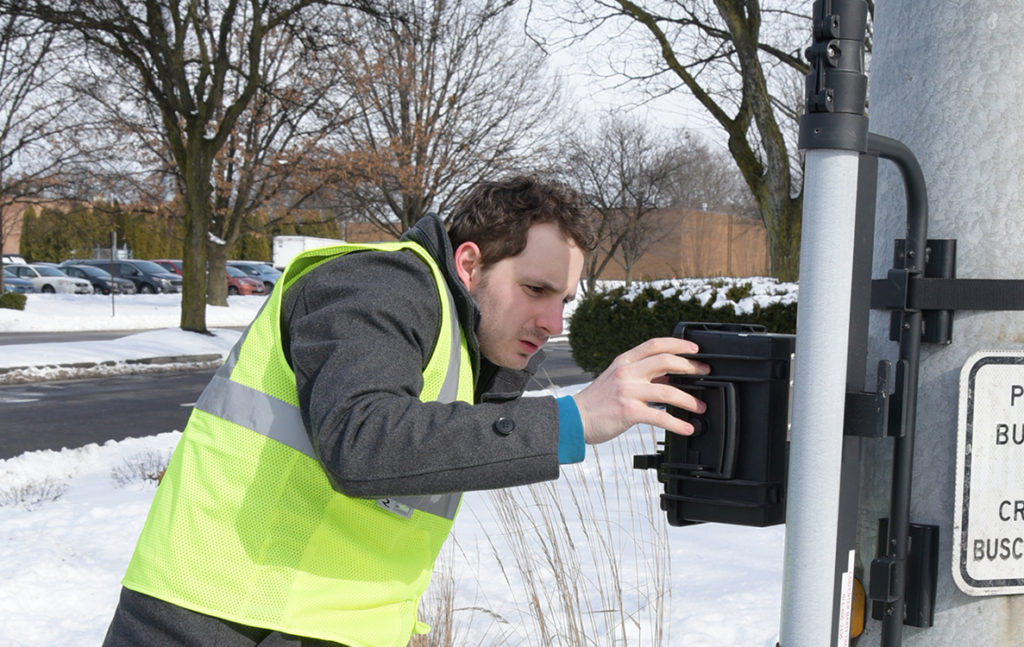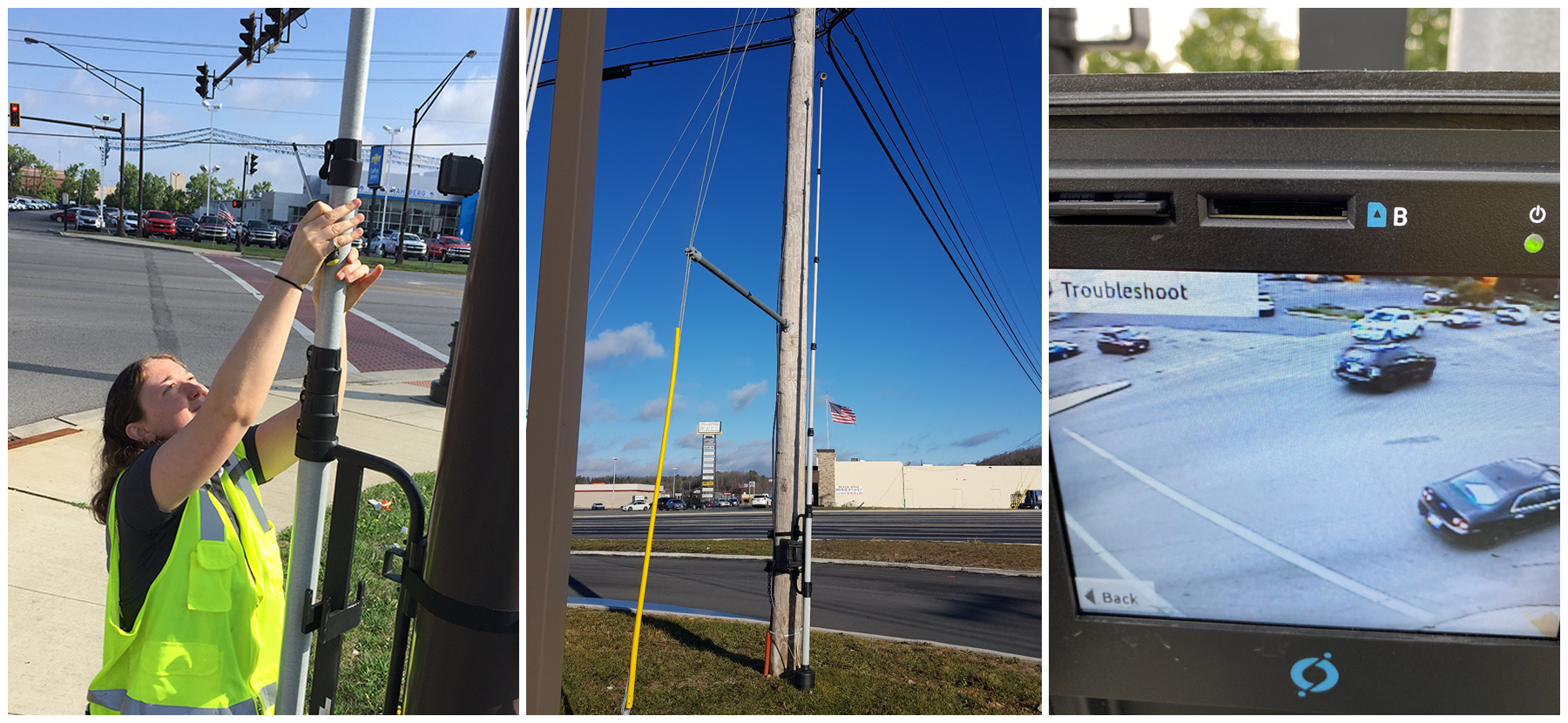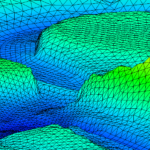Why are there cameras on roadways and at intersections?
Have you ever gone through an intersection and noticed a camera angled at you? Though cameras are not often used for catching drivers running red lights, they are used for other purposes. Let us explain why traffic engineers use cameras. We will also show you some traffic caught on camera.
Why We Use Cameras
Traffic cameras help us understand how many, when, and in what ways people are using transportation infrastructure. Volume, turning movement, and travel delay data is recorded and analyzed so we can recommend solutions for the transportation challenges people and communities experience. Recommended improvements can be as simple as adding signage, updating traffic signal timing, or changing pavement markings. Sometimes an additional lane, access drive, or a new traffic signal is warranted.
Camera Locations

Carpenter Marty Transportation uses traffic cameras along roadways, intersections, railroad crossings, and pedestrian/multi-use paths. Unlike the traditional tube counters, there is no noise associated with each vehicle that passes. Often, they go unnoticed. The cameras are small and are several feet above the ground once set up. Since their footprint is narrow, and they are typically attached to a utility pole, they can look like a part of the utility system.
Our traffic cameras blend in with the environment so much that there are few environmental disruptions. We did have some natural visitors on one of our cameras last fall. Click here to see the stink bug traffic caught on camera. He seemed to be navigating the camera lens in a roundabout-like fashion.
Benefits of Cameras vs. Traditional Collection Methods
Cameras are not the only way to assess transportation facilities. We have manually counted motor vehicles and non-motorist transportation, such as buggies, bikes, and pedestrians. Tube counters are also a highly utilized means of collecting traffic information.
We have found traffic camera setup to be safer, cleaner, and quicker than other traffic collection means. It’s more reliable too! Our traffic cameras can be set up and collect data at any time of the year, even in the snow and rain! They have remote connectivity and can capture additional video footage to supplement field observations and counts. This provides our team a more well-rounded understanding of the area.

The accuracy and efficiency of our traffic camera data collection are two of the biggest benefits. Their setup is less time-consuming and does not require someone to stay in the study area. This cost-saving method is great for us and our clients. A large intersection, requiring more than one person to count for extended periods of time, can save a client 24 hours of labor, or more! Additionally, video footage can be sped up or rewound during the review, leading to more efficiencies and assurance of our data accuracy.
What Happens Next?
The Carpenter Marty Transportation team can take data collection and studies a step further by preparing preliminary layouts and completing alternative analyses to help our clients financially and physically plan intended improvements.
Contact us to see how our cameras and traffic services can help your community’s traffic study and planning needs.



